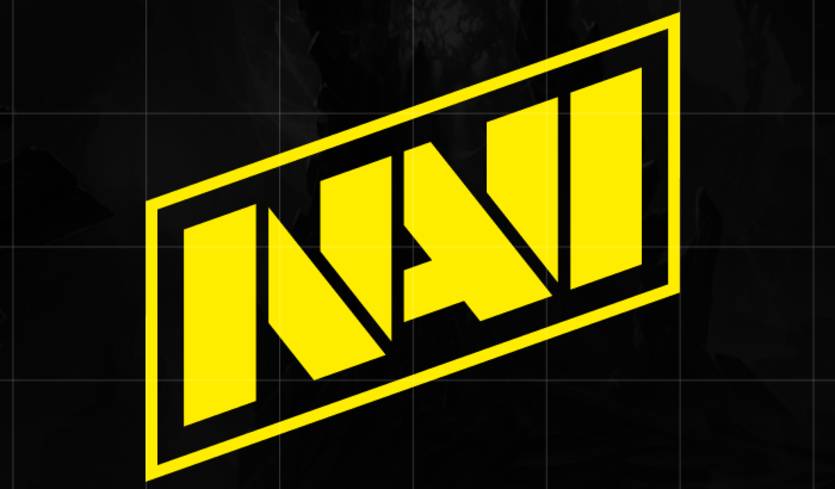 Recently, scientists from Oregon State University (USA) decided to set a world record. Specialists from the Dynamic Robotics Laboratory presented their bipedal robot Atrias. The developers promise that the new product will soon become the fastest robot in the world that moves on two legs. It is not surprising, because the prototype of the Atrias motor system was an ostrich. It is known that this bird can reach speeds of up to 70 km/h. Specialists are confident that their robot will be able to move at almost the same speed. In addition, the upright development of American scientists maintains balance perfectly and does not fall from jolts.
Upright walking is still a difficult task for robotics developers. Copying a four-legged animal is much easier than making a machine effectively balance on two points. Only now developers are gradually teaching robots to walk fully, and not imitate an uncertain gait. For example, one of the most famous humanoid robots, Asimo, has only begun to demonstrate a more or less human gait in the last few years, although Honda has been working on it for almost 30 years.
The development of Mabel demonstrates very interesting results in recreating human running. Engineers from the University of Michigan (USA) did not focus on speed or the ability to balance perfectly. Instead, they focused as much as possible on imitating the movements of human legs when running. Most current bipedal robots move without lifting their feet off the ground. Mabel acts differently. When the machine is moving, it is clear that at a certain point both of its feet do not touch the floor. Due to this, the speed of movement increases. The developers claim that Mabel, like a running person, develops a speed of more than 10 km / h. Manufacturers of cybernetic prostheses and exoskeletons have already become interested in the design features.
One of the undoubted leaders in the creation of robots is the engineering company Boston Dynamics, which actively cooperates with the DARPA agency. The company is working on the creation of both four-legged and two-legged machines. The most famous humanoid development of the company is the legendary robot Atlas. Not long ago, in January 2015, Boston Dynamics specialists presented a new version of the design to the world. The robot was almost completely reassembled. Engineers replaced and updated 75% of the parts, improved the joints, made the wrists movable. But most importantly, the robot was finally freed from the insurance. Now it moves completely autonomously, thanks to remote control. In all its glory, the updated Atlas will show itself at the annual robotics competition DARPA Robotics Challenge in June. Another interesting project that will be presented at this competition may be the Escher robot from the Virginia Tech laboratory at the Virginia Polytechnic University (USA). In the past, its employees have already impressed with their developments. Thus, the Thor robot (the previous version of Escher) was able to independently extinguish an artificial fire on a ship during tests. Virginia Tech developers specifically make their machines as strong and reliable as possible, because they will be involved in tactical operations and saving people in combat zones. In such conditions, it is extremely important to stand firmly on your feet.
Recently, scientists from Oregon State University (USA) decided to set a world record. Specialists from the Dynamic Robotics Laboratory presented their bipedal robot Atrias. The developers promise that the new product will soon become the fastest robot in the world that moves on two legs. It is not surprising, because the prototype of the Atrias motor system was an ostrich. It is known that this bird can reach speeds of up to 70 km/h. Specialists are confident that their robot will be able to move at almost the same speed. In addition, the upright development of American scientists maintains balance perfectly and does not fall from jolts.
Upright walking is still a difficult task for robotics developers. Copying a four-legged animal is much easier than making a machine effectively balance on two points. Only now developers are gradually teaching robots to walk fully, and not imitate an uncertain gait. For example, one of the most famous humanoid robots, Asimo, has only begun to demonstrate a more or less human gait in the last few years, although Honda has been working on it for almost 30 years.
The development of Mabel demonstrates very interesting results in recreating human running. Engineers from the University of Michigan (USA) did not focus on speed or the ability to balance perfectly. Instead, they focused as much as possible on imitating the movements of human legs when running. Most current bipedal robots move without lifting their feet off the ground. Mabel acts differently. When the machine is moving, it is clear that at a certain point both of its feet do not touch the floor. Due to this, the speed of movement increases. The developers claim that Mabel, like a running person, develops a speed of more than 10 km / h. Manufacturers of cybernetic prostheses and exoskeletons have already become interested in the design features.
One of the undoubted leaders in the creation of robots is the engineering company Boston Dynamics, which actively cooperates with the DARPA agency. The company is working on the creation of both four-legged and two-legged machines. The most famous humanoid development of the company is the legendary robot Atlas. Not long ago, in January 2015, Boston Dynamics specialists presented a new version of the design to the world. The robot was almost completely reassembled. Engineers replaced and updated 75% of the parts, improved the joints, made the wrists movable. But most importantly, the robot was finally freed from the insurance. Now it moves completely autonomously, thanks to remote control. In all its glory, the updated Atlas will show itself at the annual robotics competition DARPA Robotics Challenge in June. Another interesting project that will be presented at this competition may be the Escher robot from the Virginia Tech laboratory at the Virginia Polytechnic University (USA). In the past, its employees have already impressed with their developments. Thus, the Thor robot (the previous version of Escher) was able to independently extinguish an artificial fire on a ship during tests. Virginia Tech developers specifically make their machines as strong and reliable as possible, because they will be involved in tactical operations and saving people in combat zones. In such conditions, it is extremely important to stand firmly on your feet.
 Recently, scientists from Oregon State University (USA) decided to set a world record. Specialists from the Dynamic Robotics Laboratory presented their bipedal robot Atrias. The developers promise that the new product will soon become the fastest robot in the world that moves on two legs. It is not surprising, because the prototype of the Atrias motor system was an ostrich. It is known that this bird can reach speeds of up to 70 km/h. Specialists are confident that their robot will be able to move at almost the same speed. In addition, the upright development of American scientists maintains balance perfectly and does not fall from jolts.
Upright walking is still a difficult task for robotics developers. Copying a four-legged animal is much easier than making a machine effectively balance on two points. Only now developers are gradually teaching robots to walk fully, and not imitate an uncertain gait. For example, one of the most famous humanoid robots, Asimo, has only begun to demonstrate a more or less human gait in the last few years, although Honda has been working on it for almost 30 years.
The development of Mabel demonstrates very interesting results in recreating human running. Engineers from the University of Michigan (USA) did not focus on speed or the ability to balance perfectly. Instead, they focused as much as possible on imitating the movements of human legs when running. Most current bipedal robots move without lifting their feet off the ground. Mabel acts differently. When the machine is moving, it is clear that at a certain point both of its feet do not touch the floor. Due to this, the speed of movement increases. The developers claim that Mabel, like a running person, develops a speed of more than 10 km / h. Manufacturers of cybernetic prostheses and exoskeletons have already become interested in the design features.
One of the undoubted leaders in the creation of robots is the engineering company Boston Dynamics, which actively cooperates with the DARPA agency. The company is working on the creation of both four-legged and two-legged machines. The most famous humanoid development of the company is the legendary robot Atlas. Not long ago, in January 2015, Boston Dynamics specialists presented a new version of the design to the world. The robot was almost completely reassembled. Engineers replaced and updated 75% of the parts, improved the joints, made the wrists movable. But most importantly, the robot was finally freed from the insurance. Now it moves completely autonomously, thanks to remote control. In all its glory, the updated Atlas will show itself at the annual robotics competition DARPA Robotics Challenge in June. Another interesting project that will be presented at this competition may be the Escher robot from the Virginia Tech laboratory at the Virginia Polytechnic University (USA). In the past, its employees have already impressed with their developments. Thus, the Thor robot (the previous version of Escher) was able to independently extinguish an artificial fire on a ship during tests. Virginia Tech developers specifically make their machines as strong and reliable as possible, because they will be involved in tactical operations and saving people in combat zones. In such conditions, it is extremely important to stand firmly on your feet.
Recently, scientists from Oregon State University (USA) decided to set a world record. Specialists from the Dynamic Robotics Laboratory presented their bipedal robot Atrias. The developers promise that the new product will soon become the fastest robot in the world that moves on two legs. It is not surprising, because the prototype of the Atrias motor system was an ostrich. It is known that this bird can reach speeds of up to 70 km/h. Specialists are confident that their robot will be able to move at almost the same speed. In addition, the upright development of American scientists maintains balance perfectly and does not fall from jolts.
Upright walking is still a difficult task for robotics developers. Copying a four-legged animal is much easier than making a machine effectively balance on two points. Only now developers are gradually teaching robots to walk fully, and not imitate an uncertain gait. For example, one of the most famous humanoid robots, Asimo, has only begun to demonstrate a more or less human gait in the last few years, although Honda has been working on it for almost 30 years.
The development of Mabel demonstrates very interesting results in recreating human running. Engineers from the University of Michigan (USA) did not focus on speed or the ability to balance perfectly. Instead, they focused as much as possible on imitating the movements of human legs when running. Most current bipedal robots move without lifting their feet off the ground. Mabel acts differently. When the machine is moving, it is clear that at a certain point both of its feet do not touch the floor. Due to this, the speed of movement increases. The developers claim that Mabel, like a running person, develops a speed of more than 10 km / h. Manufacturers of cybernetic prostheses and exoskeletons have already become interested in the design features.
One of the undoubted leaders in the creation of robots is the engineering company Boston Dynamics, which actively cooperates with the DARPA agency. The company is working on the creation of both four-legged and two-legged machines. The most famous humanoid development of the company is the legendary robot Atlas. Not long ago, in January 2015, Boston Dynamics specialists presented a new version of the design to the world. The robot was almost completely reassembled. Engineers replaced and updated 75% of the parts, improved the joints, made the wrists movable. But most importantly, the robot was finally freed from the insurance. Now it moves completely autonomously, thanks to remote control. In all its glory, the updated Atlas will show itself at the annual robotics competition DARPA Robotics Challenge in June. Another interesting project that will be presented at this competition may be the Escher robot from the Virginia Tech laboratory at the Virginia Polytechnic University (USA). In the past, its employees have already impressed with their developments. Thus, the Thor robot (the previous version of Escher) was able to independently extinguish an artificial fire on a ship during tests. Virginia Tech developers specifically make their machines as strong and reliable as possible, because they will be involved in tactical operations and saving people in combat zones. In such conditions, it is extremely important to stand firmly on your feet.


